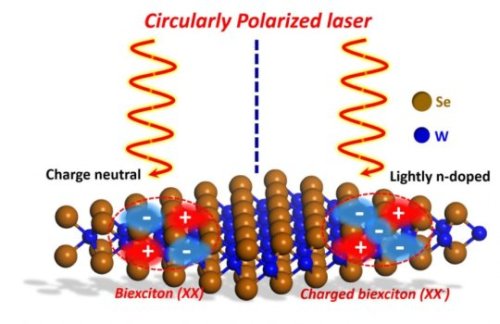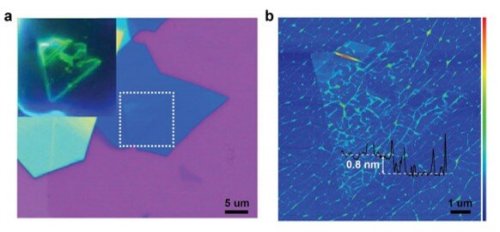#excitons
Research on light-matter interaction could improve electronic and optoelectronic devices
Fundamental research sheds light on new many-particle quantum physics in atomically thin semiconductors
A paper published in Nature Communications by Sufei Shi, assistant professor of chemical and biological engineering at Rensselaer, increases our understanding of how light interacts with atomically thin semiconductors and creates unique excitonic complex particles, multiple electrons, and holes strongly bound together. These particles possess a new quantum degree of freedom, called “valley spin.” The “valley spin” is similar to the spin of electrons, which has been extensively used in information storage such as hard drives and is also a promising candidate for quantum computing.
The paper, titled “Revealing the biexciton and trion-exciton complexes in BN encapsulated WSe2,” was published in the Sept. 13, 2018, edition of Nature Communications. Results of this research could lead to novel applications in electronic and optoelectronic devices, such as solar energy harvesting, new types of lasers, and quantum sensing.
Shi’s research focuses on low dimensional quantum materials and their quantum effects, with a particular interest in materials with strong light-matter interactions. These materials include graphene, transitional metal dichacogenides (TMDs), such as tungsten diselenide (WSe2), and topological insulators.
Post link
Giant gate-tunable bandgap renormalization and excitonic effects in a 2-D semiconductor
Investigating the remarkable excitonic effects in two-dimensional (2-D) semiconductors and controlling their exciton binding energies can unlock the full potential of 2-D materials for future applications in photonicandoptoelectronic devices. In a recent study, Zhizhan Qiu and colleagues at the interdisciplinary departments of chemistry, engineering, advanced 2-D materials, physics and materials science in Singapore, Japan and the U.S. demonstrated large excitonic effects and gate-tunable exciton binding energies in single-layer rhenium diselenide(ReSe2) on a back-gated graphene device. They used scanning tunneling spectroscopy (STS) and differential reflectance spectroscopy to measure the quasiparticle (QP) electronic and optical bandgap (Eopt) of single-layer ReSe2 to yield a large exciton binding energy of 520 meV.
The scientists achieved continuous tuning of the electronic bandgap and exciton binding energy of monolayer ReSe2by hundreds of milli-electron volts via electrostatic gating. Qiu et al. credited the phenomenon to tunable Coulomb interactions arising from the gate-controlled free carriers in graphene. The new findings are now published on Science Advances and will open a new avenue to control bandgap renormalization and exciton binding energies in 2-D semiconductors for a variety of technical applications.
Post link
Scientists found excitons in nickel oxide for the first time
Russian scientists from Ural Federal University (UrFU), together with their colleagues from Institute of Metal Physics of the Ural Department of Russian Academy of Sciences, have studied fundamental characteristics of nickel oxide nanocrystals and found excitons on the light absorption edge for the first time. An exciton is an electron-hole pair bound with electrostatic coupling that migrates in a crystal and transmits energy within it. The presence of an exciton in this area allows for detailed research of edge parameters in permitted energy bands. This may be useful for the development of next-generation optoelectronic devices. The results of the study were published in Physica B: Physics of Condensed Matterjournal.
Liquids and (under certain circumstances) gases are divided into conductors and dielectrics. The former conduct electricity, and the latter, respectively, do not. Semiconductors fall between these two categories—conductivity occurs due to the movement of charged electrons and holes within the crystal. They are found in systems with impurities that can either release or receive electrons, as well as after irradiation with high-energy light.
“In the physics of semiconductors, there is a notion of fundamental adsorption edge that indicated the edge-level energy of light adsorption. It corresponds to the energy gap—the area of energies an electron has to pass in the course of movement under the influence of light from the valence band (where it is usually located) to the conductivity band. A positively charged empty space that occurs at this place is called a hole. Its electrostatic (Coulombic) interaction with the electron in the conduction band causes the formation of an electron-hole pair, or and exciton. In the optic spectrum it can be seen as a narrow line a little below the fundamental adsorption edge. Notably, an exciton does not participate in electrical conductivity, but transfers the absorbed energy,” says Anatoly Zatsepin, a co-author of the article, and the head of a scientific lab at UrFU.
Post link



